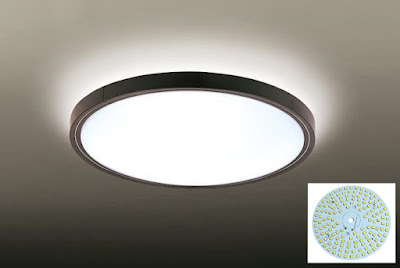What does led stand for?
LED stands for Light Emitting Diode. It is a commonly used light-emitting device that releases energy through the recombination of electrons and holes to emit light. LEDs are widely used in the field of lighting.
LED was first invented by Nick Holonyak Jr. and his team at GE in 1962. In the early days, it could only emit red light with low luminosity. Later, other monochromatic versions were developed. Today, the luminous color of LEDs has spread across visible light, infrared and ultraviolet light and the luminosity has also increased substantially. Initially, it was only used as indicator light, display board, etc.
What is led light?
LED lighting products produce light up to 90% more efficiently than incandescent light bulbs.
LED lights Features
(1) Energy saving is the most prominent feature of LED lights
In terms of energy consumption, the energy consumption of LED lamps is one-tenth that of incandescent lamps and one-fourth that of energy-saving lamps. This is one of the biggest features of LED lights. Nowadays, people advocate energy saving and environmental protection. It is precisely because of this feature of energy saving that the application range of LED lights is very wide, making LED lights very popular.
(2) LED lights can work in high-speed switching state
As you may notice that every LED screen or picture on the streets is unpredictable. This shows that LED lights can be switched on and off at high speed. However, for the incandescent lamps we usually use, it cannot achieve such a working state. In normal life, if the switch is switched too many times, it will directly cause the filament of the incandescent lamp to break. This is also an important reason for the popularity of LED lights.
(3) Environmental protection
The LED lamp does not contain any heavy metal materials such as mercury, but the fluorescent lamp contains it, which reflects the environmental protection characteristics of the LED lamp. Nowadays, people attach great importance to environmental protection, so more people are willing to choose environmentally friendly LED lights.
(4) Fast response
Another outstanding feature of LED lights is that the response speed is relatively fast. As soon as the power is turned on, the LED light will light up immediately. Compared with the energy-saving lamps we usually use, the response speed is faster. When the traditional light bulb is turned on, it often takes a long time to illuminate the room, and it can only light up after the light bulb has completely heated up.
(5) Compared with other light sources, LED lights are more "clean"
The so-called "clean" does not refer to the clean surface and interior of the lamp, but the lamp is a cold light source, does not generate too much heat, and thus does not attract those insects that like light and heat. Especially in summer, there will be a lot of bugs in the countryside.
Some insects love heat by nature. Incandescent lamps and energy-saving lamps will generate heat after a period of use. This heat happens to be liked by insects, and it is easy to attract insects. This will undoubtedly bring a lot of pollutants to the surface of the lamp, and the excrement of insects will make the room very dirty. However, the LED light is a cold light source and will not attract insects. In this way, insect excrement will not be produced. Therefore, LED lights are more "clean".
How long do led lights last?
The lifespan of LED lights can reach more than 100,000 hours。 That can be described as "one-time-for-all" when it comes to ordinary household lighting.





No comments:
Post a Comment